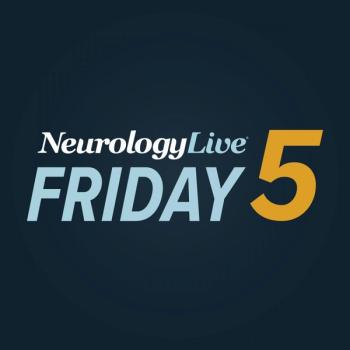
Hubert Fernandez, MD, the director of the Center for Neurological Restoration at Cleveland Clinic, detailed the importance of raising awareness for Parkinson disease and the strides made in research.


Hubert Fernandez, MD, the director of the Center for Neurological Restoration at Cleveland Clinic, detailed the importance of raising awareness for Parkinson disease and the strides made in research.

Take 5 minutes to catch up on NeurologyLive's highlights from the week ending August 14, 2020.

The director of the Center for Neurological Restoration at Cleveland Clinic describes the greatest unmet needs in Parkinson disease research.

Notably, the data unveiled a previously unreported link between a positive family history of parkinsonism and dementia, and carbon monoxide poisoning.

Take 5 minutes to catch up on NeurologyLive's highlights from the week ending August 7, 2020.

The director of the Center for Neurological Restoration at Cleveland Clinic detailed the recent technological and therapeutic innovations and their advantages in treating Parkinson disease.

An overview of the tweet chat on mental health in neurological disorders, featuring highlighted contributions from the medical community.

Take 5 minutes to catch up on NeurologyLive's highlights from the week ending July 31, 2020.

The director of the Center for Neurological Restoration at Cleveland Clinic details the direction of clinical research for Parkinson disease and efforts that are being made to alleviate quality of life issues for those with the disease.

Join NeurologyLive and the Women Neurologist Group on Twitter to discuss the importance of mental health and wellness in neurologic disorders.

The Patient Controller app will be made available in the coming weeks, according to designer Abbott.

Neurology News Network for the week ending July 25, 2020.

Take 5 minutes to catch up on NeurologyLive's highlights from the week ending July 24, 2020.

The director of the Center for Neurological Restoration at Cleveland Clinic discussed the importance of raising awareness of Parkinson disease on World Brain Day, highlighting the magnitude of the disease.

This year, the World Federation of Neurology partnered with the International Parkinson and Movement Disorder Society to spotlight advancements in Parkinson disease.

The FDA-approved medication showed a robust ability to decrease hours spent “on” with troublesome dyskinesia in patients with Parkinson disease.

Take 5 minutes to catch up on NeurologyLive's highlights from the week ending July 17, 2020.

Data from the Michael J. Fox Foundation’s Fox Insight study reveal a number of consequences as a result of the virus for those with chronic neurologic diseases.

"Mind Moments," a podcast from NeurologyLive, brings you an exclusive interview with Daniel Claassen, MD, MS.

The 18F-PI-2620 radiotracer’s positive effect on diagnosing and differentiating patients with suspected progressive supranuclear palsy leaves questions about its potential as a PSP progression biomarker.

Take 5 minutes to catch up on NeurologyLive's highlights from the week ending July 10, 2020.

The associate professor of neurology at Vanderbilt University Medical Center offered his perspective on the feasibility of genotyping, phasing, and targeting of SNPs in Huntington disease.

Despite the ongoing public health emergency, many of the telehealth policies established by the CARES Act waiver are expiring.

Reduced amplitude and/or robustness of the rhythms, rather than disrupted timing, are the most indicative of a subsequent risk of PD, independent of nighttime sleep disturbances.

The associate professor of neurology at Vanderbilt University Medical Center spoke to the findings of a recent study in Huntington disease that assessed the feasibility of selectively knocking down mutant protein expression.